Aprilia Tuono 660 Review
By Rennie Scaysbrook
The Aprilia Tuono 1100 has been the pick – at least in my book – of the nakedbike litter for years, its genes a mix of corner carving class paired with a healthy dose of V4 superbike “f**k you!” horsepower. It’s the ultimate street weapon – more usable than a Ducati Streetfighter, more exclusive than a KTM Super Duke – but its time at the head of the nakedbike pack has been a lonely one.
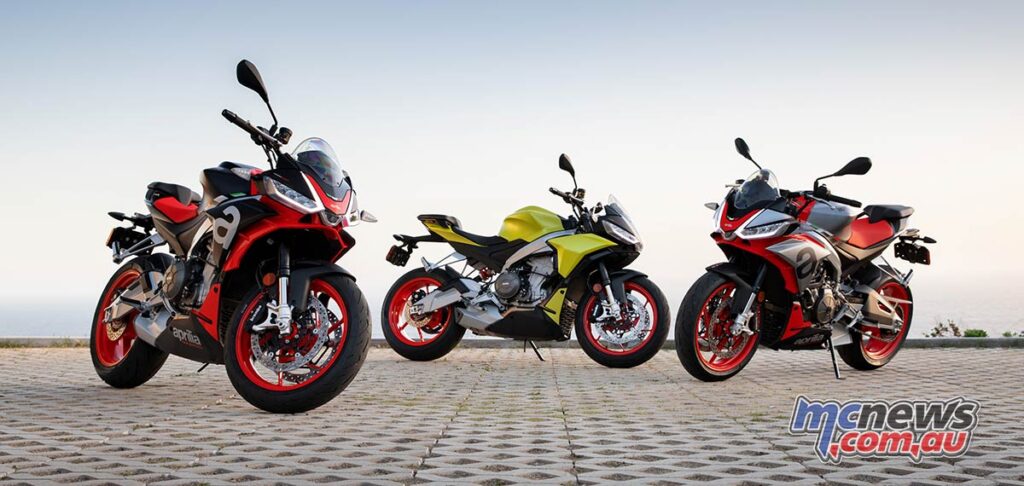
The Tuono has been the big dog of the Aprilia nakedbike pack since 2002, when it was first released as a stripped back version of the production bike that was the basis for Troy Corser’s RSV1000 WorldSBK racer. In that time it has morphed into the V4 we all know and love, but the Tuono always been just one model (with a number of spec’d up/one off specials).
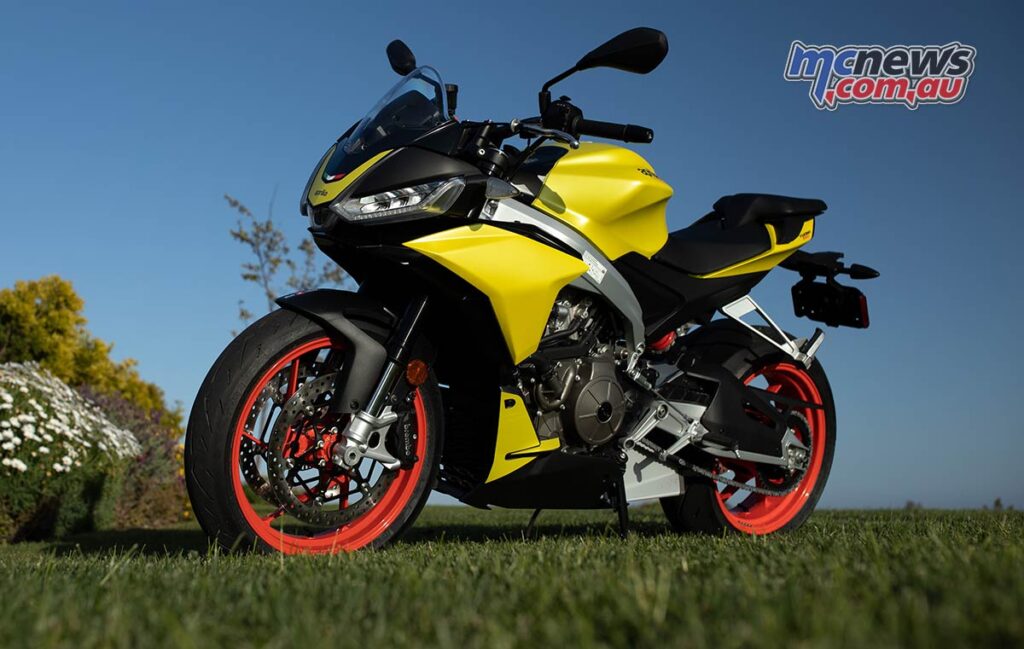
The Aprilia RS 660’s arrival on the scene during the height of the Covid-19 pandemic was one of the few bright spots in an otherwise very bleak 2020 when it came to new motorcycle models.
In a new direction from the Noale company that made its name in razor-sharp small capacity sports streetbikes like the RS 250 and RS 125, Aprilia is now giving the naked Tuono 1100 a much needed younger brother for the first time in the model’s life.
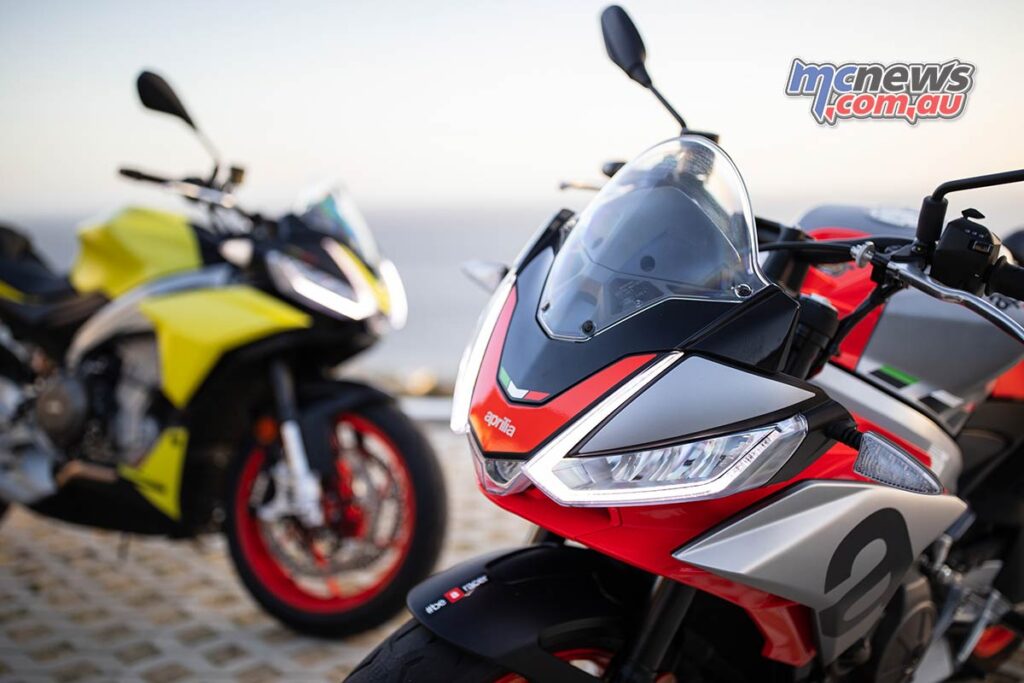
Expected to sell for around $18,500 in Australia and available in three colours of Acid Gold (yellow), Iridium Grey, and Concept Black, the Tuono 660 is the second of three bikes that will use the mid-size twin-cylinder motor as its beating heart.
The third of which will be the Tuareg adventure machine due for release later this year. For Australia we’ll also receive a restricted LAMS Tuono 660 with power limited to 47 hp (35 kW) and a slightly lower price, but otherwise unchanged from the standard Tuono 660, with arrival expected in June or July. Both the RS 660 and Tuono 660 will not be able to be de-restricted and will have LAMS specific VINS, meaning that there is no legal avenue to convert your LAMS bike to a full power version down the track when you obtain your full licence. Can it be done, probably, just not legally.
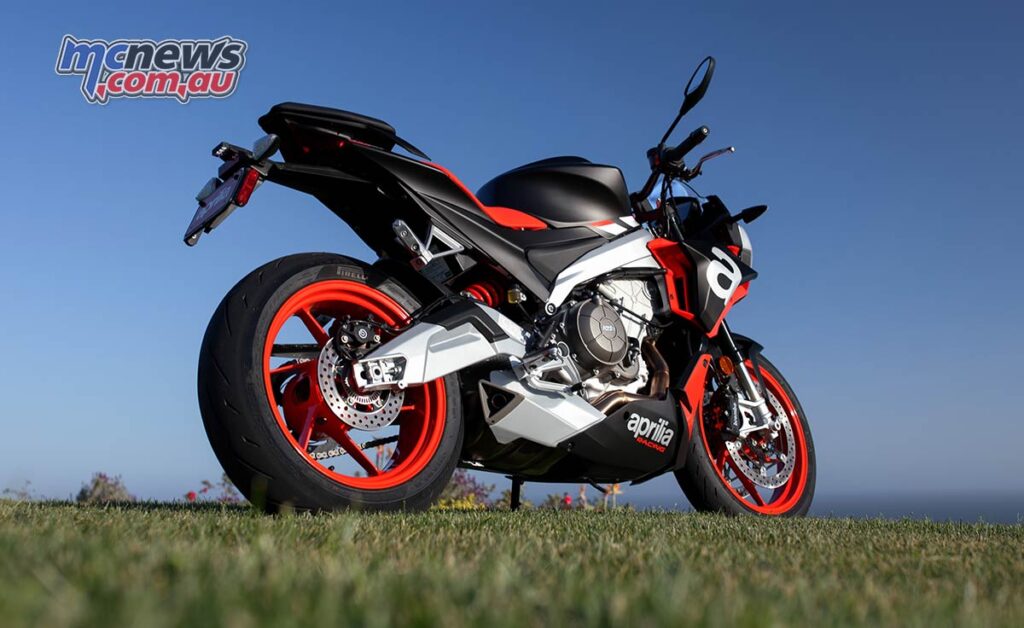
You could simplify things pretty accurately by saying the Aprilia Tuono 660 is just an RS 660 without its clothes on. Aside from the obvious bodywork and ride position changes, technically speaking, there’s very little difference between the two bikes.
You’ve got the same 659cc parallel twin-cylinder motor that pumps out a claimed 95 hp and 67 Nm of torque, bolted into the same twin-spar aluminium chassis, with the package weighing a claimed 183 kg with a full 15 litres of go juice on board.
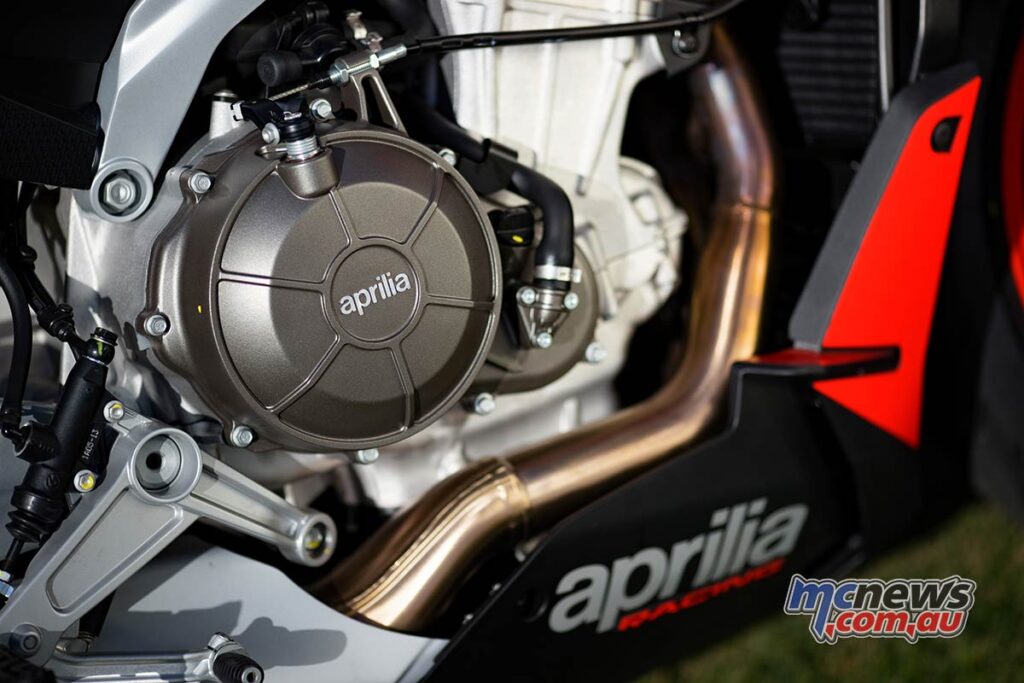
There are subtle differences in the fork. The 41 mm Kayaba front suspension on the Tuono 660 gets 10 mm less wheel travel than the RS at 110 mm, with both rebound damping and preload adjustments done via the right fork leg only. The RS also gets a lithium-ion battery compared to the lead acid one found on the Tuono.
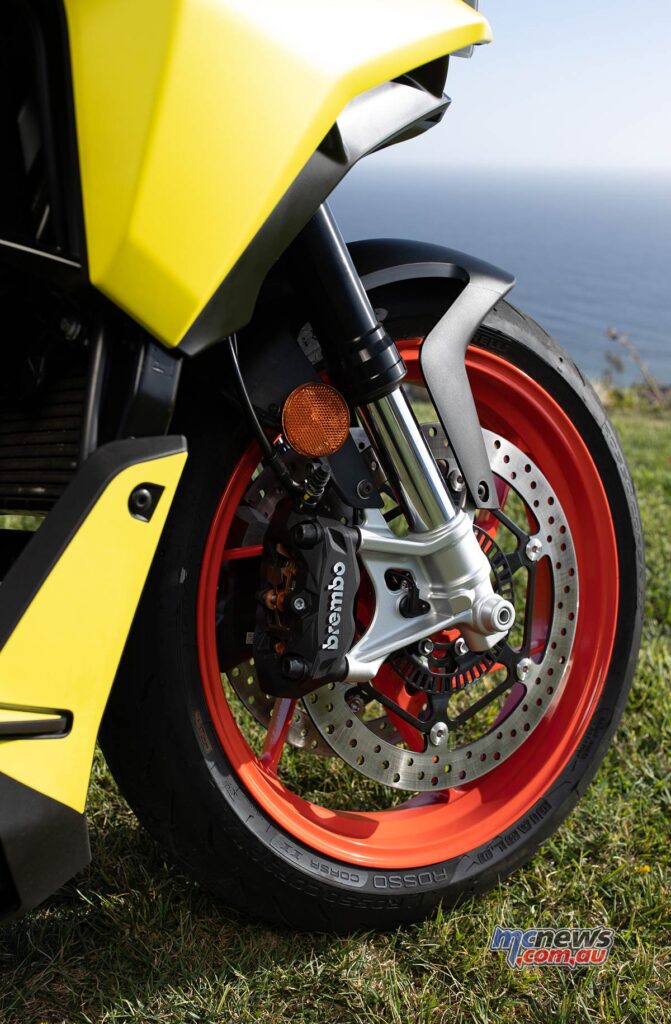
The electronics also have a few differences. The Tuono doesn’t come with the RS’s Continental six-axis IMU as standard fitment, and it is unclear as yet whether this will be an option in Australia. If that option does become available, the Tuono gets Cornering ABS and the sharp-looking LED lights suddenly become bendy Cornering Lights that help you see around the upcoming curve.
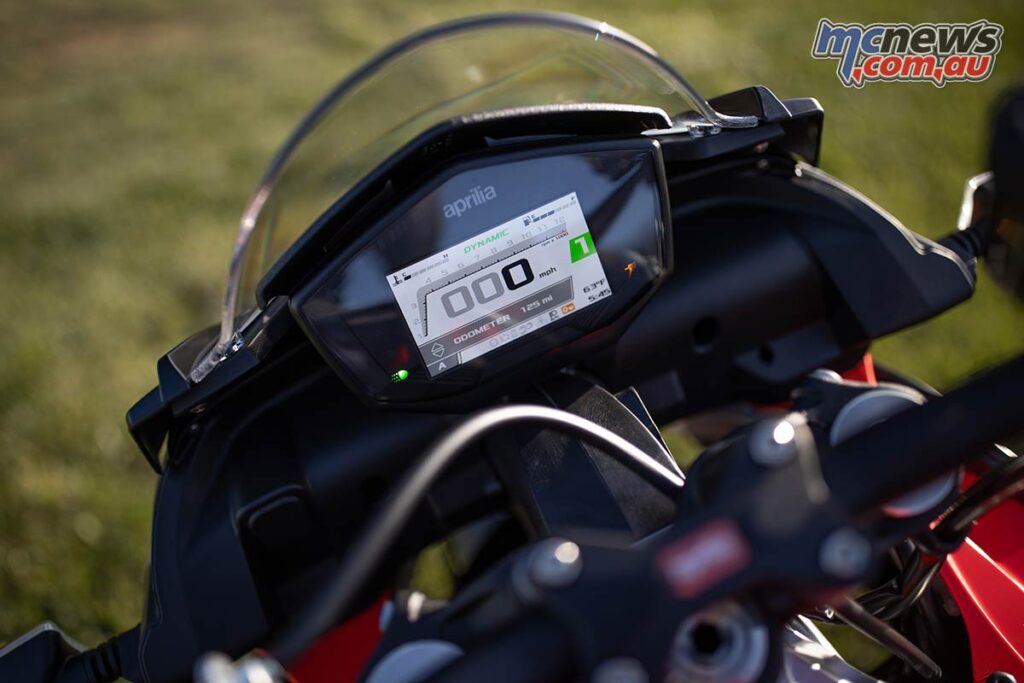
If we don’t get the option for a higher spec’ IMU with the Tuono 660, we’ll be left with traditional ABS and LED lighting. And if you want to smack up and down the gearbox and not use the clutch, the Aprilia Quick Shift system is an optional extra compared to standard fitment on the sportier RS.
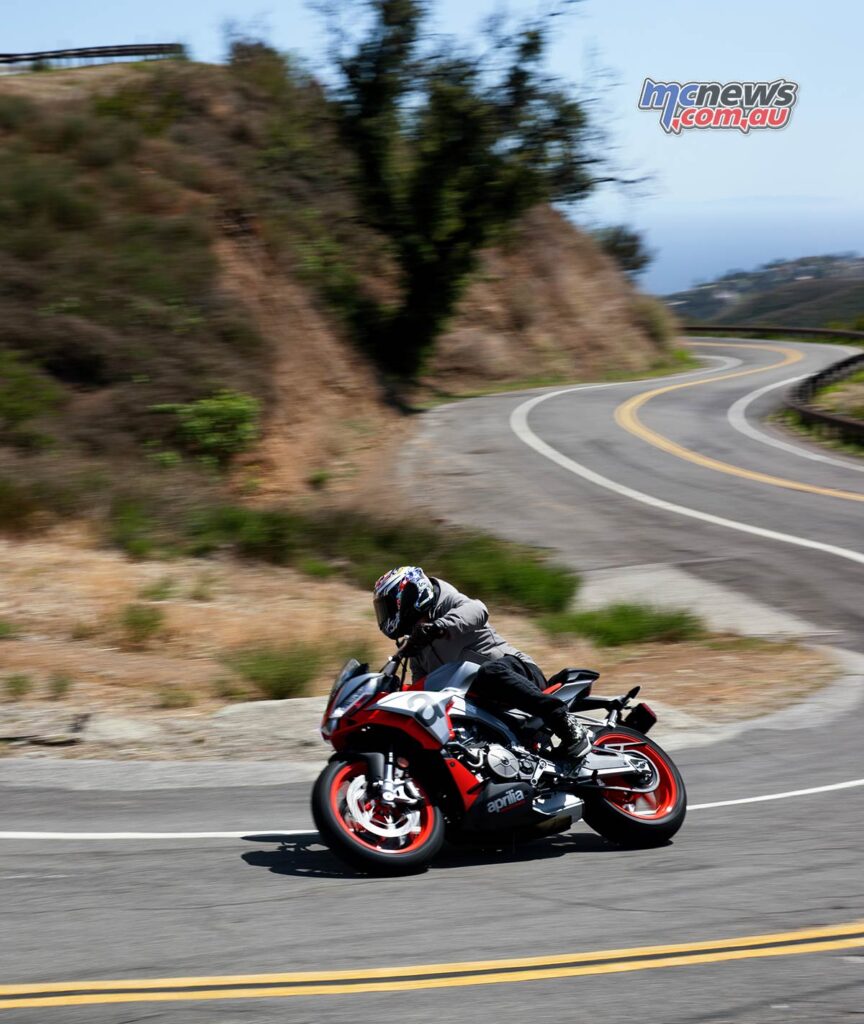
Aside from that, the Tuono gets all the same electronics as the RS. Five variable riding modes including two rider programmable ones, eight stage traction control, engine brake control, ABS, wheelie control and, hallelujah, cruise control.
Also, delightfully, Aprilia allows you to turn off the ABS on the rear (which simultaneously disengages wheelie control) and allows your inner hooligan to shine on a bike built for back-it-in silliness and one wheeled salutes.
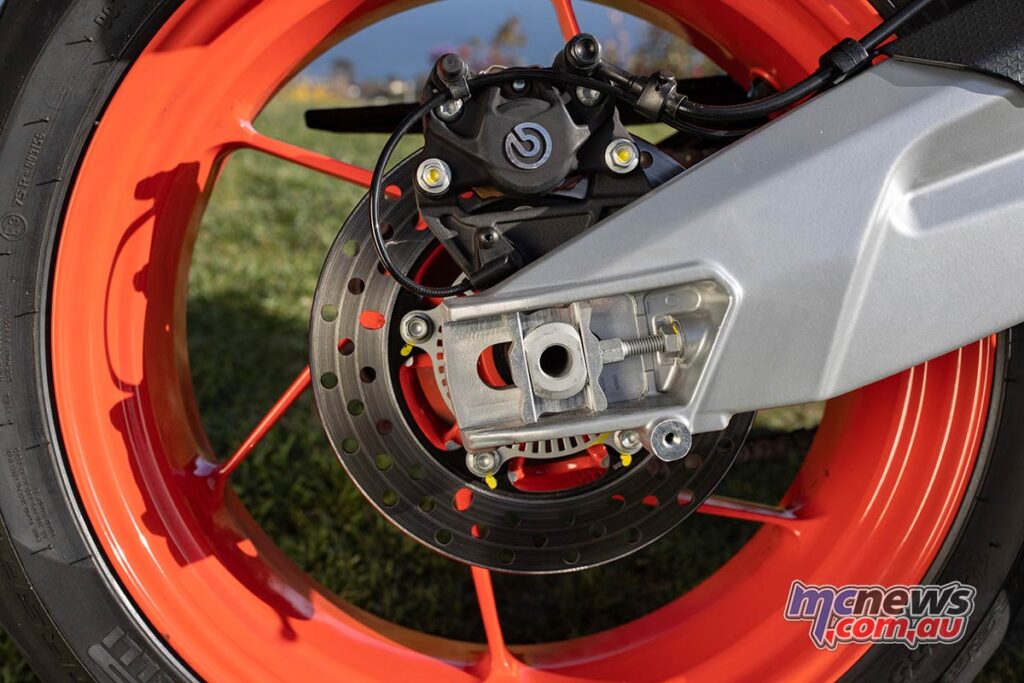
Dimensions wise, there’s nothing to split the two. Same wheelbase of 1370 mm, length at 1995 mm, seat height at 820 mm, although the Tuono has a smidgeon more trail (only 0.3mm, so, nothing, really), and it’s wider overall by 20 mm at 805 mm.
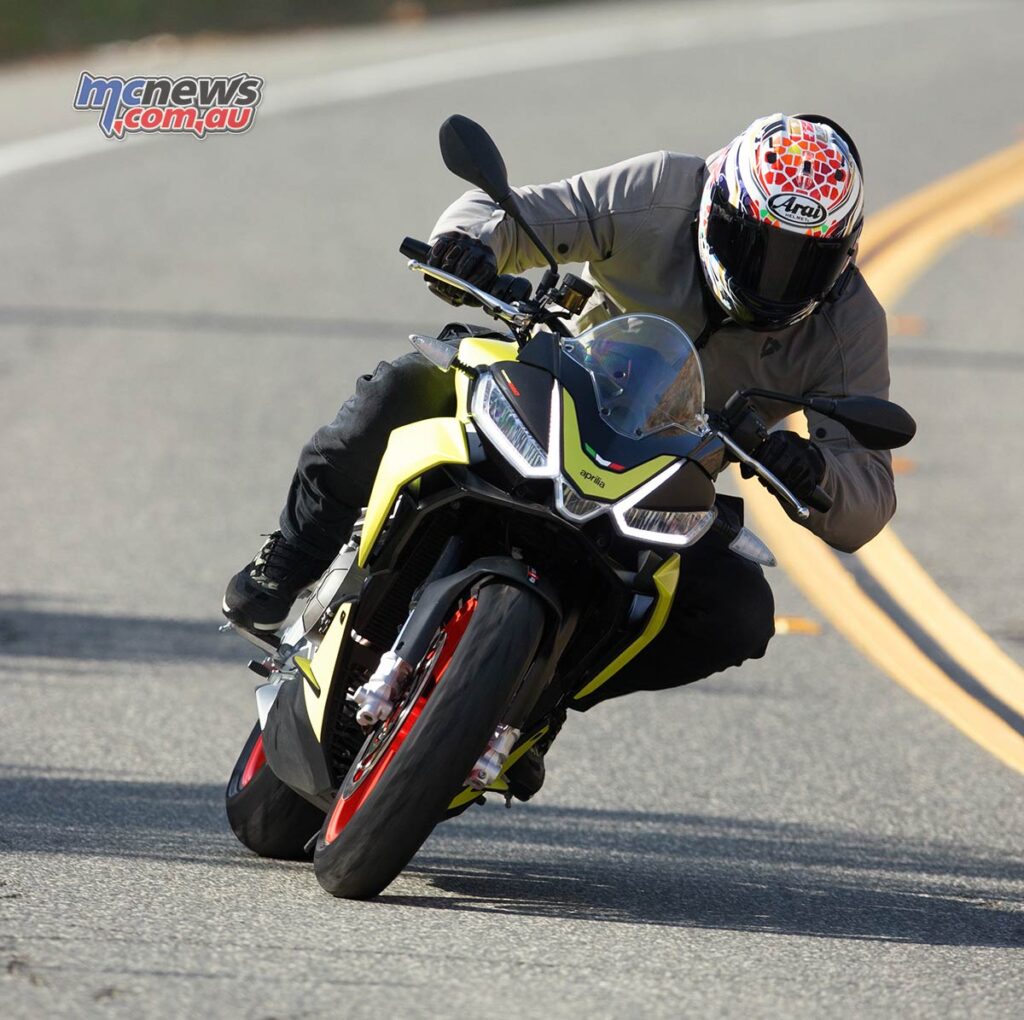
Even when you climb on board, the differences are small, and that’s when you take into account the Tuono’s one-piece handlebar. The RS 660 comes with raised clip-ons that sit higher than the top triple-clamp, which puts the rider into almost a nakedbike ride position, anyway.
The Tuono’s one-piece ’bar is a touch higher and closer to the rider, which helps keep your back a bit straighter, but in truth, it’s not that much different.
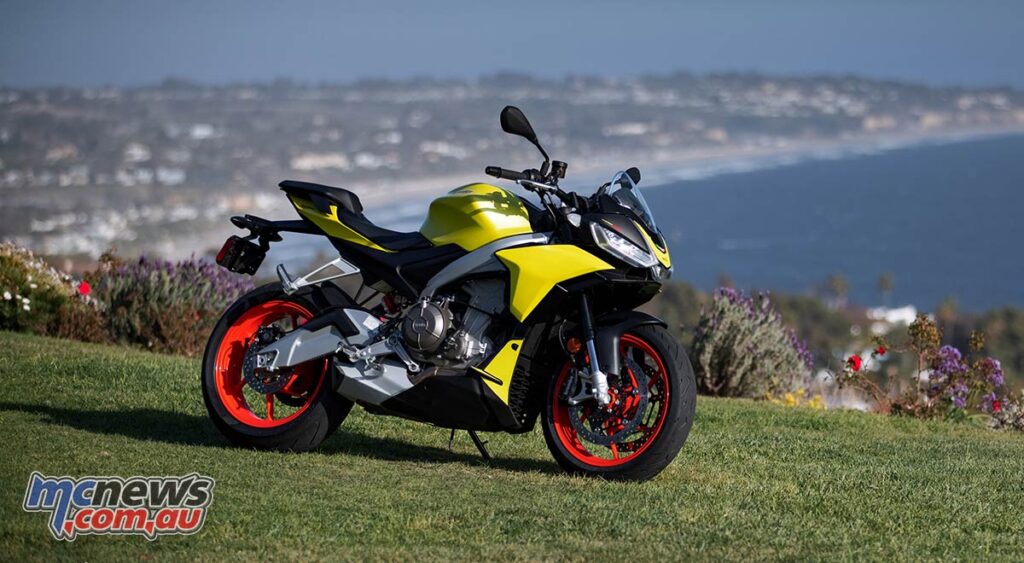
It’s not entirely fair to call the Tuono 660 (or the Tuono 1100 for that matter) a full blown nakedbike compared to say, the Yamaha MT-07, and this is thanks to the bikini-style bodywork that envelops the chassis. It’s even got winglets – if you want to call them that – mounted behind Aprilia’s “a” logo on either side of the radiator.
These are more to help direct cool air around the top of the cylinder head than to stop you riding off into space like Aleix Espargaro, and in turn they help direct hot air away from the rider to help reduce fatigue.
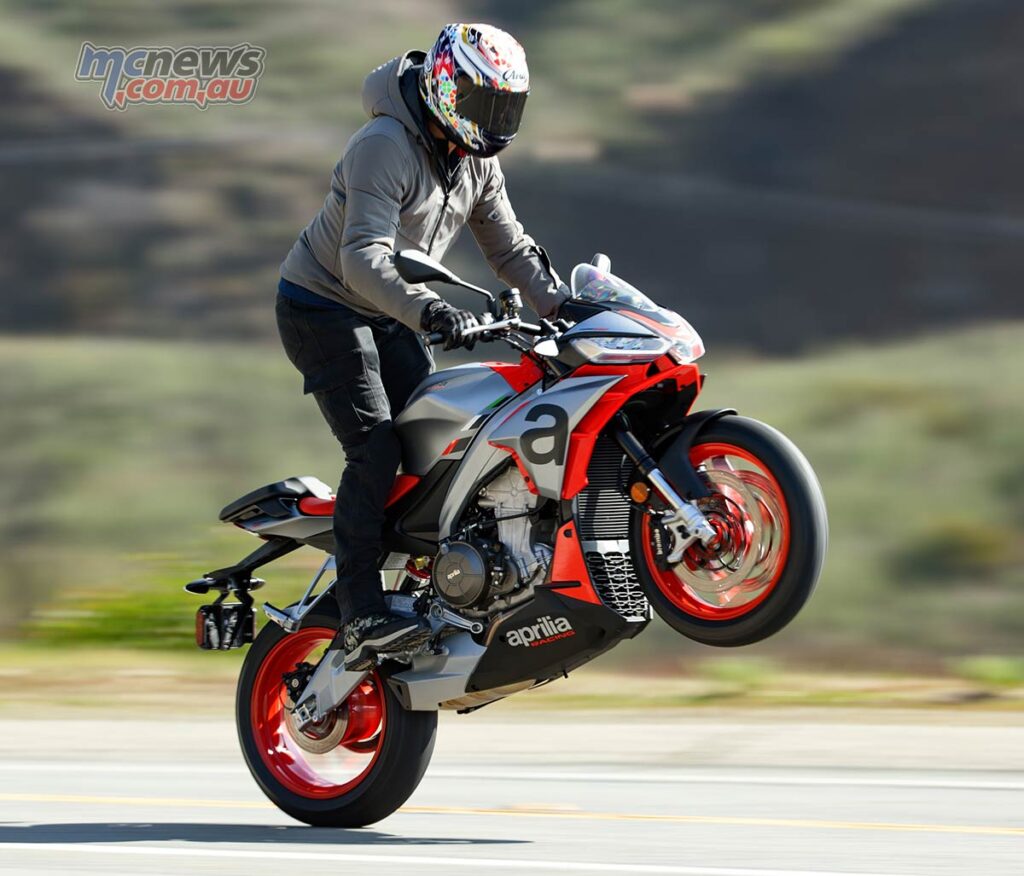
You’ve got a tiny screen up front that does a surprising amount of good when it comes to wind deflection. At 183 cm tall, I get hit squarely in the chest from the wind blast, which is a welcome change from so many other bikes on the market that send the wind directly into the Arai logo on my helmet and rattle my squash to bits on a long ride.
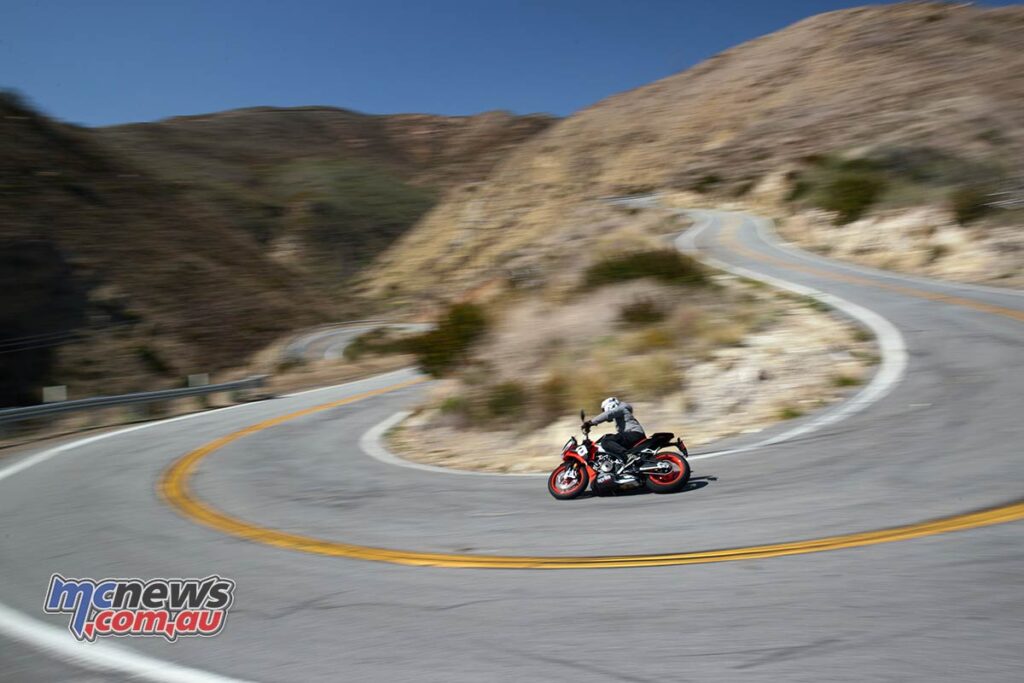
The Tuono’s parallel-twin motor is indeed great little thing in the lower rev ranges. The initial throttle application is buttery smooth, and it builds torque nicely until… you hit a wall. From 5000-7000 rpm, the motor labours through the dreaded emissions block that’s required to get it passed Euro 5 compliance.
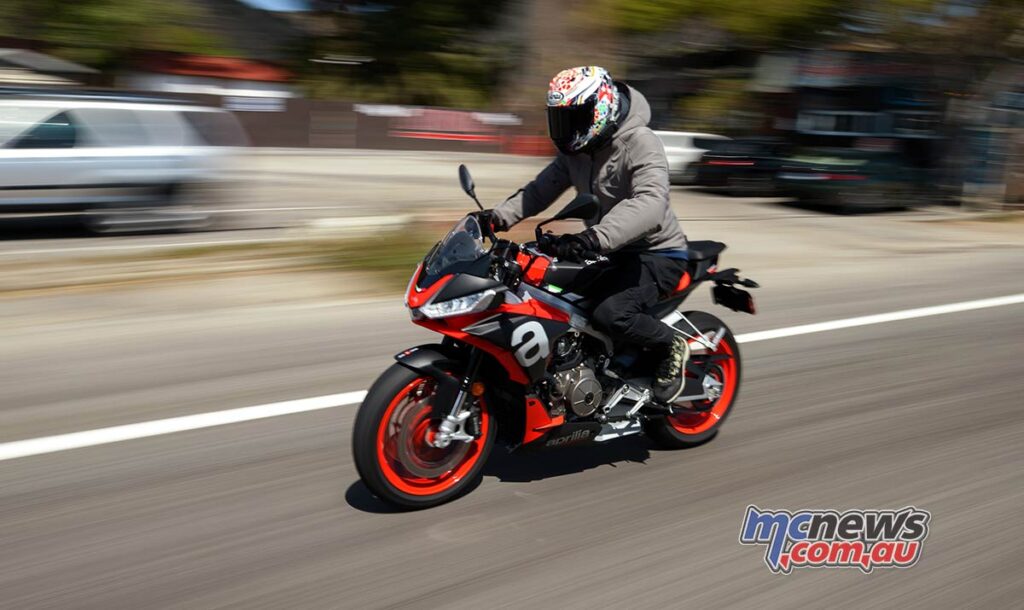
The result is the power is neutered until you push past that 7000 rpm barrier, at which point the drive is reinstalled, and then some. It feels almost two-stroke-ish in the way the power rushes back in. Normal service quickly resumes as the revs climb high and fast, as you ride towards the 11,500 rpm redline.
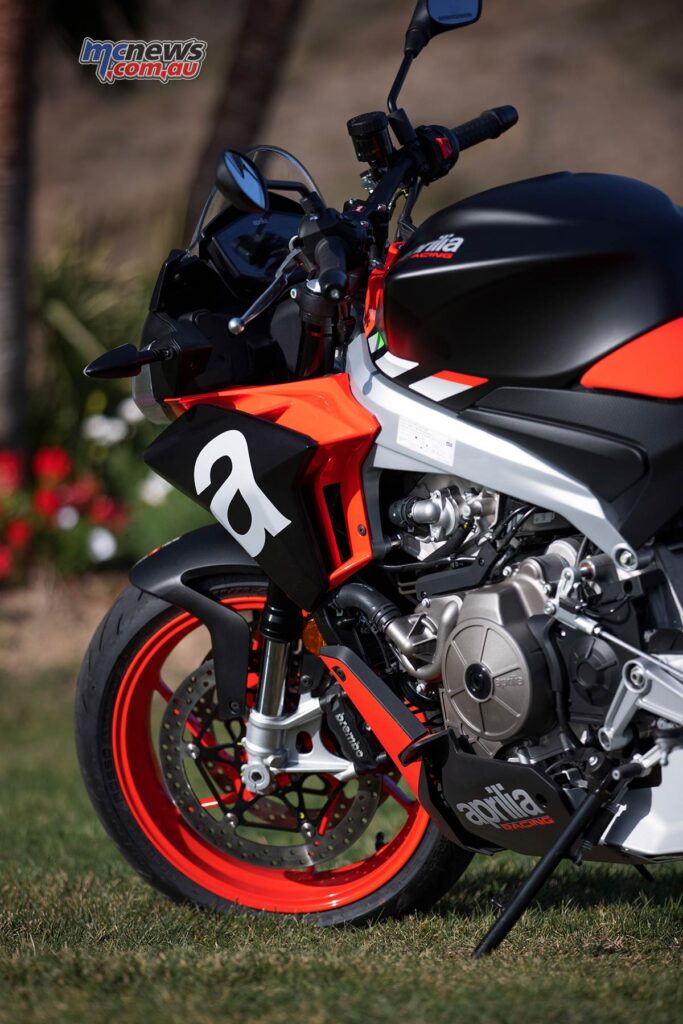
There’s not a lot of point in going that far, however. Aprilia claims peak horsepower comes in at 10,500 rpm, with peak torque just after the emissions block at 8500 rpm, so you’re best to find the happy place between the two to get the most passionate performance from your new naked dance partner.
The Aprilia Performance Ride Control electronics suite is one of the best out there not just for its ability to alter the characteristic of the ride, but also in its ease of use and adjustment. Playing around with the various engine and TC maps had me on level two of three for the throttle and level one on TC, with ABS disconnected on the rear and no wheelie control as I spent the afternoon conserving front tyre wear…
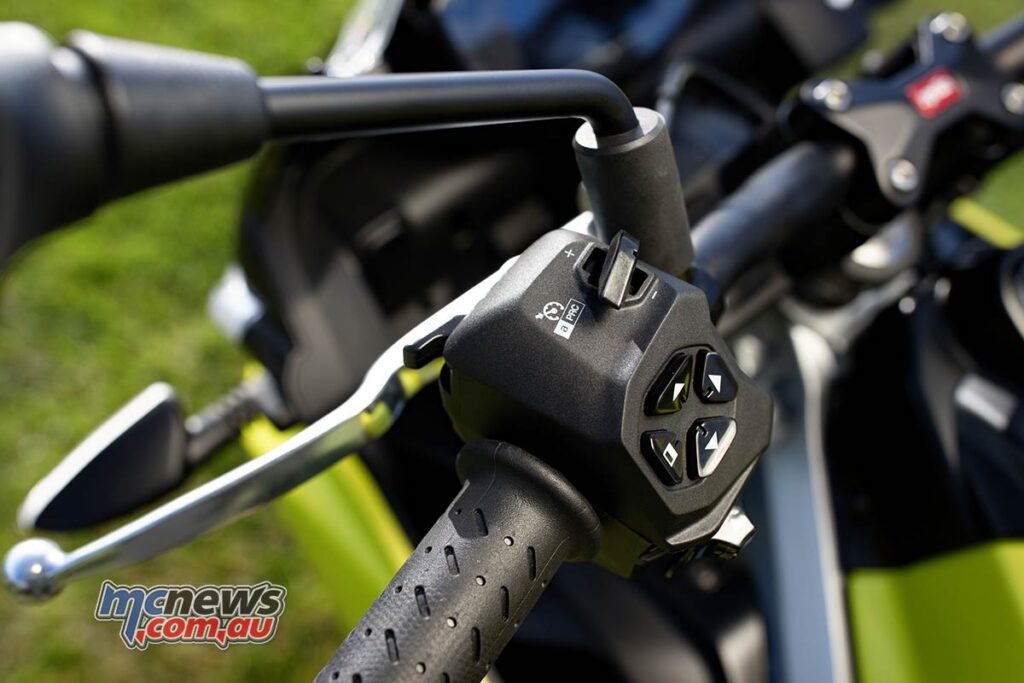
It’s all changed via the little button on the right handlebar below the starter, and although it’s not the prettiest dash and is rather utilitarian, everything is easy to navigate to and change quickly, which is something to be said for considering how much stuff you can change on a Tuono 660.
One thing the electronics have no bearing over is the suspension, which is about as analogue as you can get. It’s not fully adjustable in rebound and preload adjustment front and rear, and if you really start to push the Tuono in the twisties, you will begin to find the outer limits of the fork.
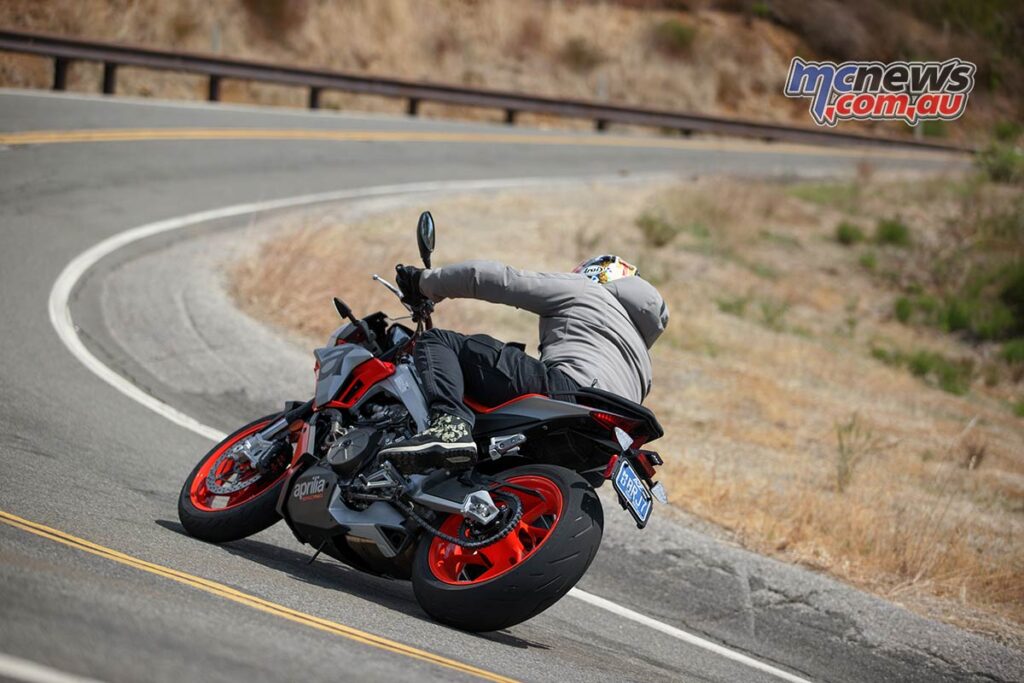
Hard braking, like the kind you do on a track, will see you hit full travel pretty quickly but at simple cruising speeds, which is where most of the Tuono 660s bought will be ridden, the suspension action is plush enough to absorb most bumps you’ll find while still retaining the chassis’s nimble nature.
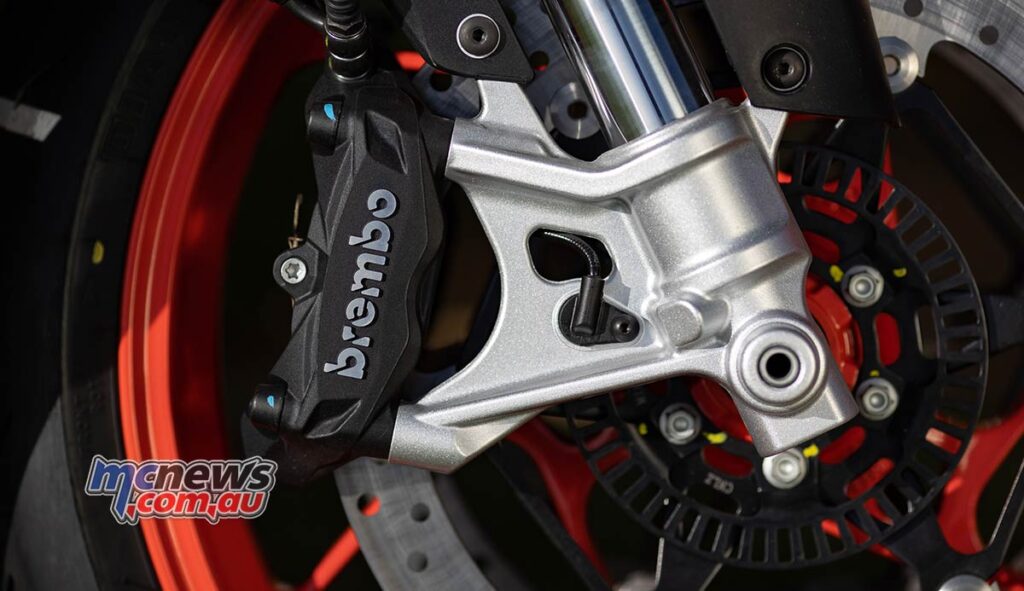
The brakes, being four-piston radially-mounted monoblocs from Brembo, are unsurprising in their performance. They just work, but the fact they are paired to adjustable ABS is worthy of note. The front brakes are plenty powerful enough, and will be all you’ll need for such a machine.
Overall ride comfort on the Tuono 660 is excellent, just like it is on big brother 1100. The seat is comfortable for long rides, your knees are not set at some yoga-induced angle, and the fact your chest is out nice and wide with the one-piece handlebar means the Tuono 660 could be a nice choice if you’re after a sporty long distance ride without the clip-on handlebars.
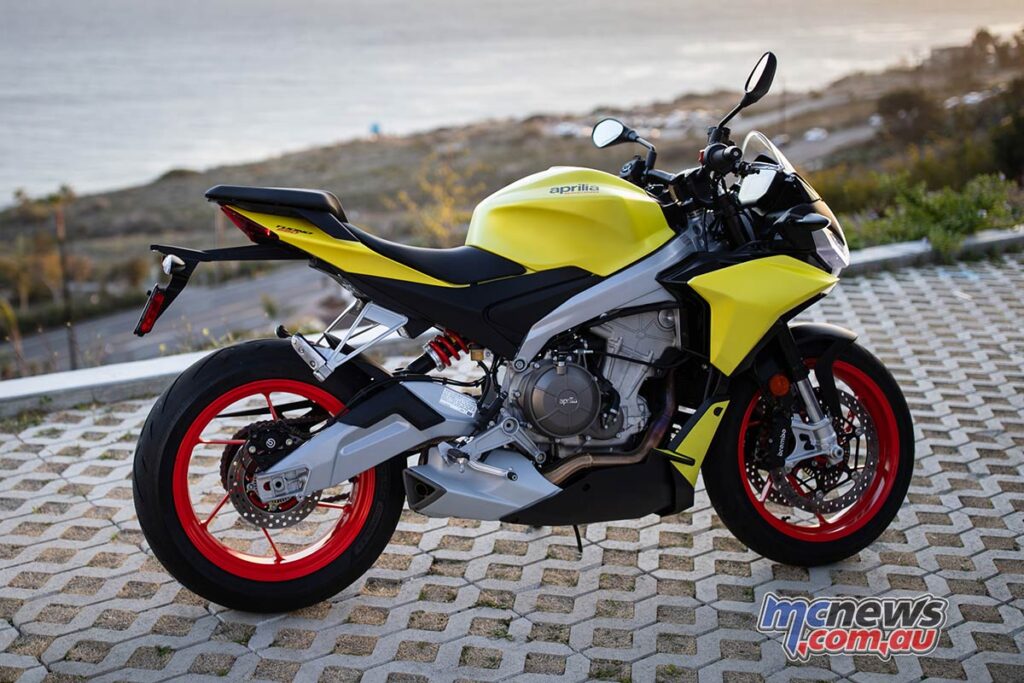
The Tuono 660 is a well-executed machine that should uphold the values set by the 1100 V4 nicely. It’s got everything a sporty nakedbike needs in a nimble and light chassis paired with a great engine (that would be even better once the emissions stuff is taken off), but will also prove adept at the general duties needed by people who ride each and every day.
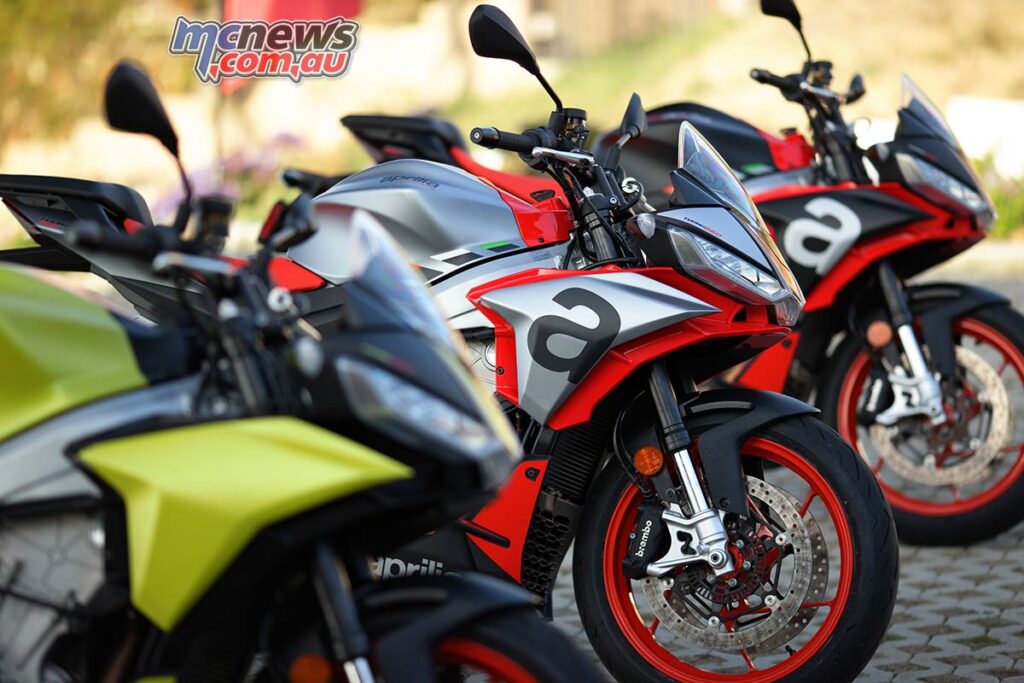
Plus there’s always the Tuono 660 LAMS edition for new riders looking to start out on Aprilia’s latest offering, it’s just restricted to 35 kW or 47 hp, otherwise its the same striking and fun package.
Aprilia Tuono 660 Specifications
| Aprilia Tuono 660 Specifications | |
| Engine | Aprilia forward-facing parallel twin-cylinder, four stroke, liquid-cooled with radiator and water-oil heat exchanger, DOHC with silent chain on the right side, four valves per cylinder |
| Bore and stroke | 81 x 63.93 mm |
| Engine capacity | 659 cc |
| Compression ratio | 13.5:1 |
| Max power | 100 HP (70 kW) at 10,500 rpm |
| Max torque | 67.0 Nm (6.83 kgm) at 8,500 rpm |
| Power supply | Airbox with front air vent. Two x 48 mm throttle bodies, Ride-by-wire management |
| Starting | Electrical |
| Lubrication | Wet sump |
| Transmission | Six-speed. Aprilia Quick Shift (AQS) System up and down (available as optional accessory) |
| Clutch | Multiplate wet clutch with slipper system |
| Secondary drive | Chain, drive ratio 17/43 |
| Electronic management | APRC suite that includes ATC (traction control), AWC (wheelie control), AEB (engine brake) AEM (engine mapping), ACC (cruise control) 5 riding modes (Road and Track, 3 pre-set and 2 customizable) |
| Chassis | Aluminum dual beam chassis with removable seat-supporting subframe |
| Front suspension | Kayaba 41 mm USD fork with top out spring, Aluminum pins to fasten radial calipers. Rebound and spring preload adjustment on a single stanchion. Wheel travel: 110 mm |
| Rear suspension | Asymmetrical aluminum swingarm. Single shock and top out spring with rebound and spring pre-load adjustment. Wheel travel: 130 mm |
| Front brake | ABS 320 mm double disc; Brembo radial calipers with 4 horizontally opposed Æ 32 mm pistons. Radial pump and metal braided brake hose |
| Rear brake | 220 mm diameter disc; Brembo caliper with two Æ 34 mm separate pistons. Master cylinder with separate reservoir and metal braided hose Multimap ABS (Cornering ABS available as optional accessory) |
| Wheels | Aluminum alloy Front: 3.5”X17” Rear: 5.5”X17” |
| Tyres | Radial tubeless, Front: 120/70 ZR 17 Rear: 180/55 ZR 17 (alternatively 180/60 ZR17) |
| Wheelbase | 1370 mm |
| Length | 1995 mm |
| Width | 805 mm |
| Saddle height | 820 mm |
| Headstock angle | 24.1° |
| Trail | 104.7 mm |
| Weight | 183 kg wet weight (169 kg dry) |
| Emissions compl. | Consumption Euro 5 4.9 liters/100 km |
| CO2 emissions | 116 g/km |
| Fuel capacity | 15 Litres (including 4-litre reserve) |
| Colours | Concept Black, Iridium Grey, Acid Gold |
| Price + Arrival | $18,000 – $18,500 (est.) AUD plus on-road costs, expected arrival June/July |
Photography by Larry Chen

































































